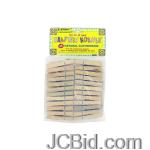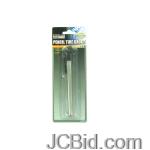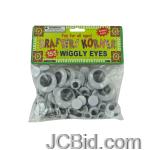
| Updated Blogs |
|
Computer Support Blog
Essensial Software for Web Based Support
HP Server and Desktop
HP ILO - Remote Tech-Support Software
More .....
|
 RSS Feed | Login
RSS Feed | Login larissabrown
it contain info regarding health,travel,business,blog,diet,technology etc......
Prevention and Treatment of Angina
By larissabrown at 2010-11-24 05:13:38
Angina pectoris, commonly referred to as angina, is a temporary pain or tightness that starts in the chest and sometimes radiates to other parts of the body, particularly the arms, neck, jaw or back. It comes on suddenly--often in response to exertion, emotional stress or exposure to cold--and is usually of short duration. It is caused by a reduction in blood flow through the coronary arteries, the blood vessels that nourish the heart muscle.
Symptoms of angina are hard to distinguish from normal chest pain like heartburn but there are certain signs that tell you that are having an angina attack. Different people would describe angina differently. Most would say that it is not very painful but just a big discomfort.
Angina is often first noticed as a pain in the general area of the chest. It may be a strong pain feeling like a vice is pressing on your chest that makes it hard to breath or it may be a light sensation just feeling like heartburn or indigestion. It is normally and indicator that the heart is not getting enough blood, maybe due to reduced blood flow in your arteries which leads to an insufficient oxygen supply to the heart.
Prevention and Treatment of Angina
Senior citizens and those involved in their elder care can address CAD or other heart problems with a two-fold effort aimed at prevention and treatment. Depending on the severity of the condition, in home care for senior citizens will generally incorporate both alleviation of pain from current heart disease and activities that will decrease risk to heart attack or other complications.
Treatment for Angina
The most preferred way of treating angina is aspirin. Aspirin has some blood thinning qualities, which will in turn make the blood flow easy and fast. Hence, the blood will reach all parts of human body. In addition, aspirin will also help to dissolve little blood clots, which are the reason behind angina pains. On the other hand, there are also some other treating methods like magnesium administration, which is usually recommended for mild angina.
The common Causes of Angina :
Heart failure
Narrowing of the aortic heart valve
Anaemia,
Abnormal heart rhythms
Risk factors for angina include cigarette smoking, frequent exposure to second hand smoke, high blood pressure, diabetes, male gender, inactivity, being 30 percent or more overweight, a family history of heart disease before age 55, and high cholesterol.
Take one adult aspirin tablet a day. The adult dose is about 325 milligrams. Aspirin is thought to decrease heart damage during an angina episode. While the drug may not prevent an attack of angina all the time, studies show that men with angina who take aspirin are less likely to have heart attacks or die of heart problems than men who don't take aspirin.
The condition of angina can be traced to its pathophysiology of certain heart conditions like myocardial ischemia resulting to decreased myocardial blood supply and increased myocardial oxygen demand. Atherosclerosis of the coronary arteries may decrease the flow of the blood to the myocardium. Coronary artery spasm has been implicated when angina occurs at rest.
Unstable angina symptoms are a syndrome that occurs between stable angina and heart attack. Characterized by an accelerating or rising pattern of chest pain that lasts longer than in stable angina, occurs at rest or with less exertion than in stable angina, or is less responsive to medication.
There are other disorders that may be responsible for increasing the demands on the heart besides just exertion. This may be due to hypertrophic cardiomyopathy, aortic regurgitation, hypertension, or aortic stenosis. Under any of these circumstances it is possible to experience angina regardless of whether there is any atherosclerosis or not.
Read About study programs abroad and also read about undergraduate degree programs and international studies graduate programs
And Also Read About student exchange and international study
Permalink | Comments (0)
Comments
To add a comment please login by clicking here
JC Store | JasmineCorp
|
JCBid
|Software
Development |
Domain
Registration | Hosting
| Web
Designing | Buy
Books |
Advertise
with JCSearch |
Whois
|
IP
Locator |
Add
Search |
Shopping
| Store
|
Free Blogs |
Free
GuestBook | Free
E-Cards |
Free
Games |
Free
Tutorials |
Set
as Home | Add
to Favorite
| Suggest
a Site |
Directory
Our Portfolio
| Terms of service
| Free quote
| Tell a Friend
| Special Offer
| Job Opportunities
| games
| Usenet Groups




